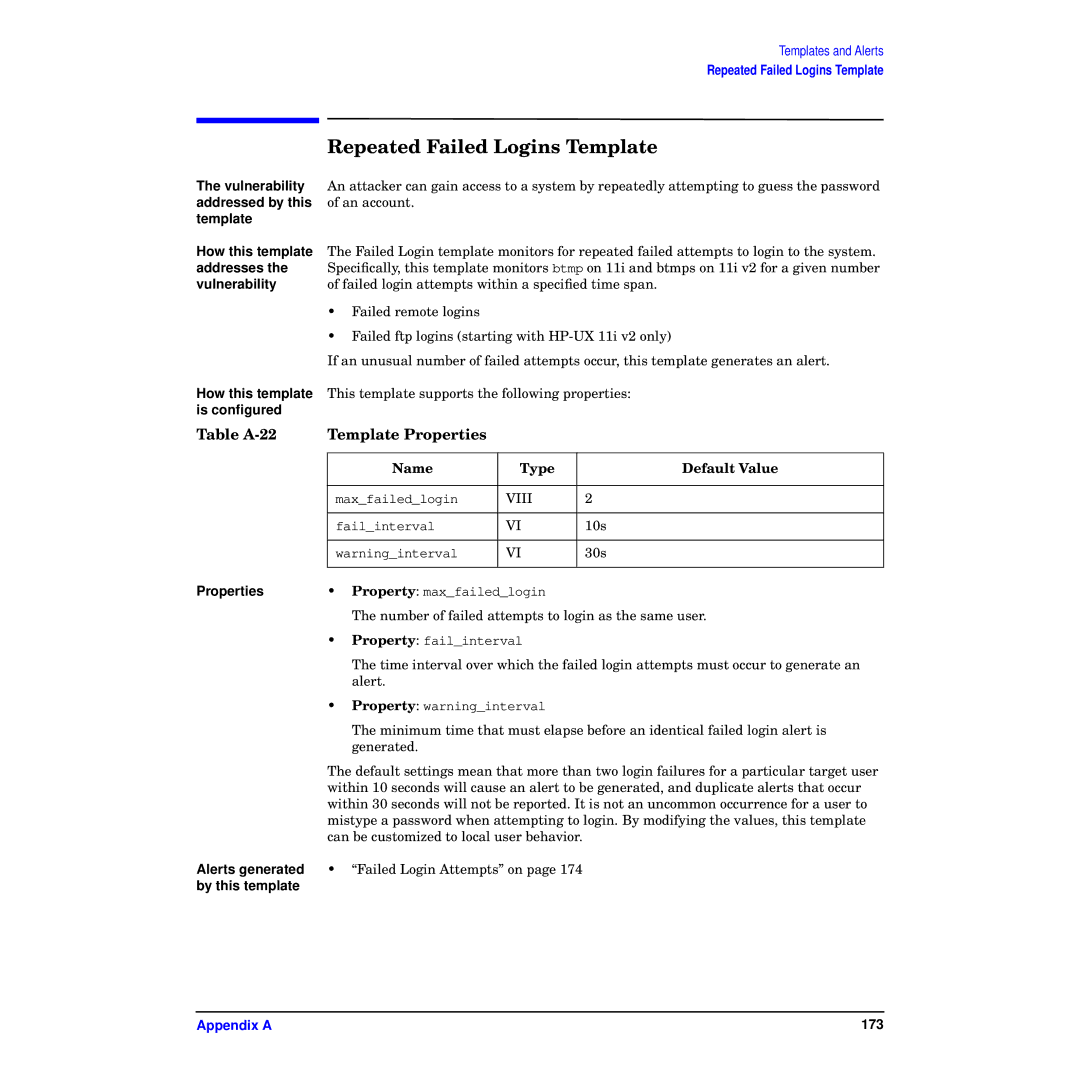
Templates and Alerts
Repeated Failed Logins Template
| Repeated Failed Logins Template |
The vulnerability | An attacker can gain access to a system by repeatedly attempting to guess the password |
addressed by this | of an account. |
template |
|
How this template | The Failed Login template monitors for repeated failed attempts to login to the system. |
addresses the | Specifically, this template monitors btmp on 11i and btmps on 11i v2 for a given number |
vulnerability | of failed login attempts within a specified time span. |
| • Failed remote logins |
| • Failed ftp logins (starting with |
| If an unusual number of failed attempts occur, this template generates an alert. |
How this template This template supports the following properties: is configured
Table | Template Properties |
|
|
|
|
|
|
| Name | Type | Default Value |
|
|
|
|
| max_failed_login | VIII | 2 |
|
|
|
|
| fail_interval | VI | 10s |
|
|
|
|
| warning_interval | VI | 30s |
|
|
|
|
Properties• Property: max_failed_login
The number of failed attempts to login as the same user.
•Property: fail_interval
The time interval over which the failed login attempts must occur to generate an alert.
•Property: warning_interval
The minimum time that must elapse before an identical failed login alert is generated.
| The default settings mean that more than two login failures for a particular target user |
| within 10 seconds will cause an alert to be generated, and duplicate alerts that occur |
| within 30 seconds will not be reported. It is not an uncommon occurrence for a user to |
| mistype a password when attempting to login. By modifying the values, this template |
| can be customized to local user behavior. |
Alerts generated | • “Failed Login Attempts” on page 174 |
by this template |
|
Appendix A | 173 |
